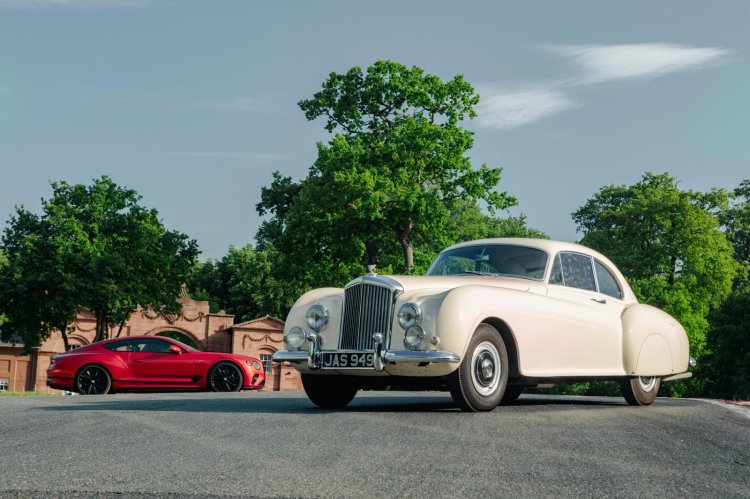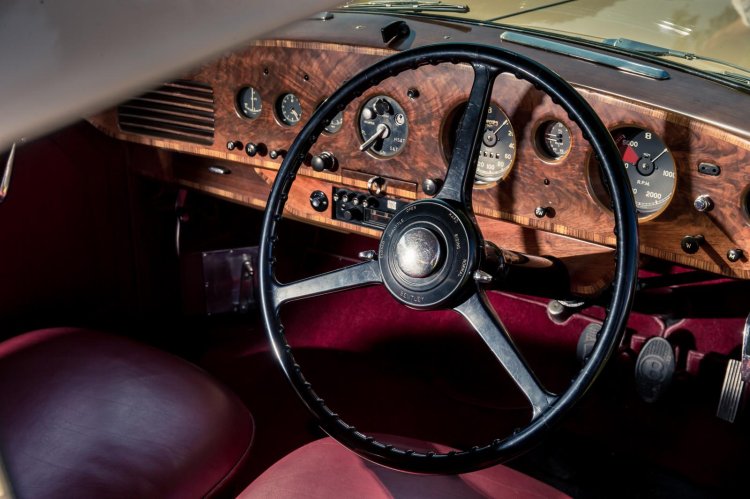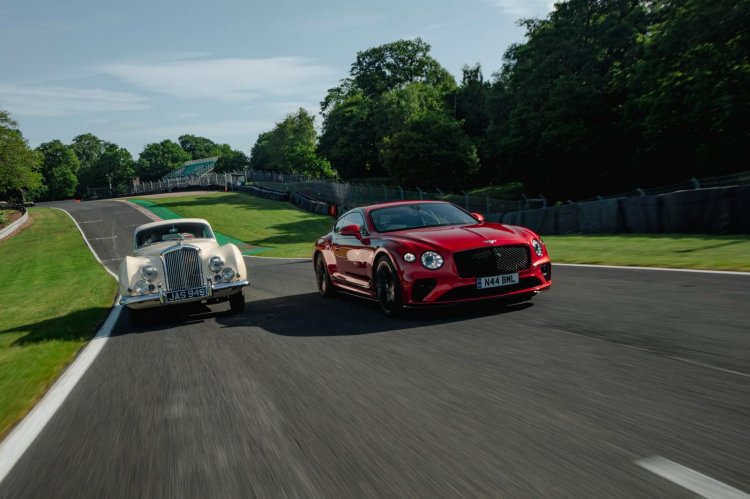Bentley is celebrating 70 years since the start of production of the R-Type Continental – one of the most celebrated cars in the company’s 103-year history, and the first Bentley to wear the Continental name. With only 208 examples produced, the R-Type Continental was as rare a sight in the 1950s as it is today – but it went down in history as a benchmark Bentley, and the embodiment of the brand’s grand touring DNA. Its ethos and its exterior design were the inspiration for the first Continental GT in 2003, and it has inspired Bentley Design teams ever since.
While the first prototype R-Type Continental (known as ‘Olga’ thanks to its OLG490 registration) was on the road in August 1951, it wasn’t until May 1952 that the car went into production, with customer deliveries starting in June. At the time, it was the fastest four-seat car in the world – a mantle that was picked-up by the modern-day Continental GT in 2003. It was also the most expensive, at £6,928 – nearly four times the 1952 average UK house price.
The Iconic R-Type Continental
The brainchild of Chief Projects Engineer, Ivan Evernden and Chief Stylist, John Blatchley, the R-Type Continental was described in period by Autocar magazine as ‘a modern magic carpet which annihilates great distances.’
Two pre-war coachbuilt specials, the ‘Embiricos’ Bentley and Mk V Corniche, had shown the advantages of improved aerodynamics. In the early 1950s, Ivan Evernden took inspiration from these one-off creations to create a sleek coupé based on the R-Type Bentley saloon. The power of the 4,566cc, six-cylinder in-line engine was raised from 140 to 153 bhp, and the transmission featured a higher final drive ratio. The prototype averaged 118.75 mph over five laps (with a best lap of just under 120mph) at the banked Montlhèry track near Paris.
To keep down to the target weight, coachbuilders HJ Mulliner crafted the bodywork, window frames, windscreen surround, backlight, seat frames and bumpers in aluminium. Even at a pared-down weight, tyre choice was critical; no standard road tyre existed which could carry a two-ton car at speeds in excess of 115 mph, and Dunlop Medium Distance Track tyres were specified.
The first production model was delivered to its owner in June 1952 and by the time production ended in 1955, 208 R-Type Continentals had been made. Of these, 193 were bodied by HJ Mulliner. Others included Park Ward (four dropheads and two coupés), Franay (five), Graber (three) and Farina (one).
JAS 949
The Bentley Heritage Collection is the proud owner of R-Type Continental chassis BC16C, registration JAS 949. ‘JAS’ was built in 1953 and delivered to its first owner, Dr Rowland Guenin of Switzerland in December 1953. It was ordered in Ivory with Red interior and a manual gearbox, a specification it retains today along with the original 4.6-litre engine. Bentley Motors acquired JAS 949 in 2001 and has maintained it in excellent mechanical order while sympathetically preserving its patina. The car is driven regularly and appears frequently on display at the Bentley campus and at events around the world.
A Modern Interpretation
All three modern generations of the Continental GT have an exterior design inspired by the R-Type Continental. The elegant ‘power line’ that traces backwards from the front wheel arch, the muscular and defined rear haunch and the gracefully sloping roofline are all modern interpretations of the same features from the R-Type Continental, giving the modern Continental GT the same balance of grace, beauty and powerful stance as its forebear. Likewise, the ability of the modern Bentley to carry four adults with luggage at high speed over long distance in exceptional comfort has its roots in this now 70-year-old masterpiece. The very latest iteration, the Continental GT Speed, adds even sharper dynamic performance to the wide and unrivalled Continental blend of abilities.
To celebrate the anniversary Bentley has released imagery of the GT Speed together with JAS 949, shot at Oulton Park in Cheshire.














